Hide & Seek with the Kings & Queens of England
Hide & Seek with the Kings & Queens of England by John Jaques & Son, c.1875.
First published in around 1865, when history meant learning the kings and queens, Jaques titled the 3 different games as Hide & Seek series 1 (William I - Richard II), Hide & Seek series 2 (Henry IV - Charles I) and Hide & Seek series 3 (Charles II - Victoria in the 1st edition or Edward VII in the 2nd edition). The first editions all had small pictures of the monarchs but the second editions had larger pictures in a more modern style looking like paintings. The game is played by players asking each other for the Event cards matching the King cards, completing sets, and so on. See the Rules►
The Boxes
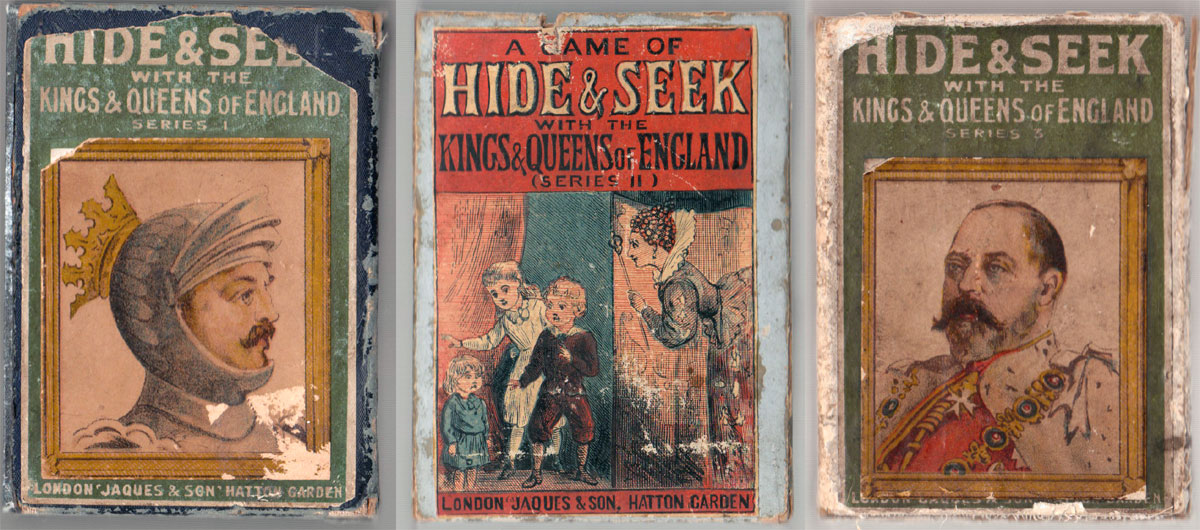
Hide & Seek series 1 (William I - Richard II)
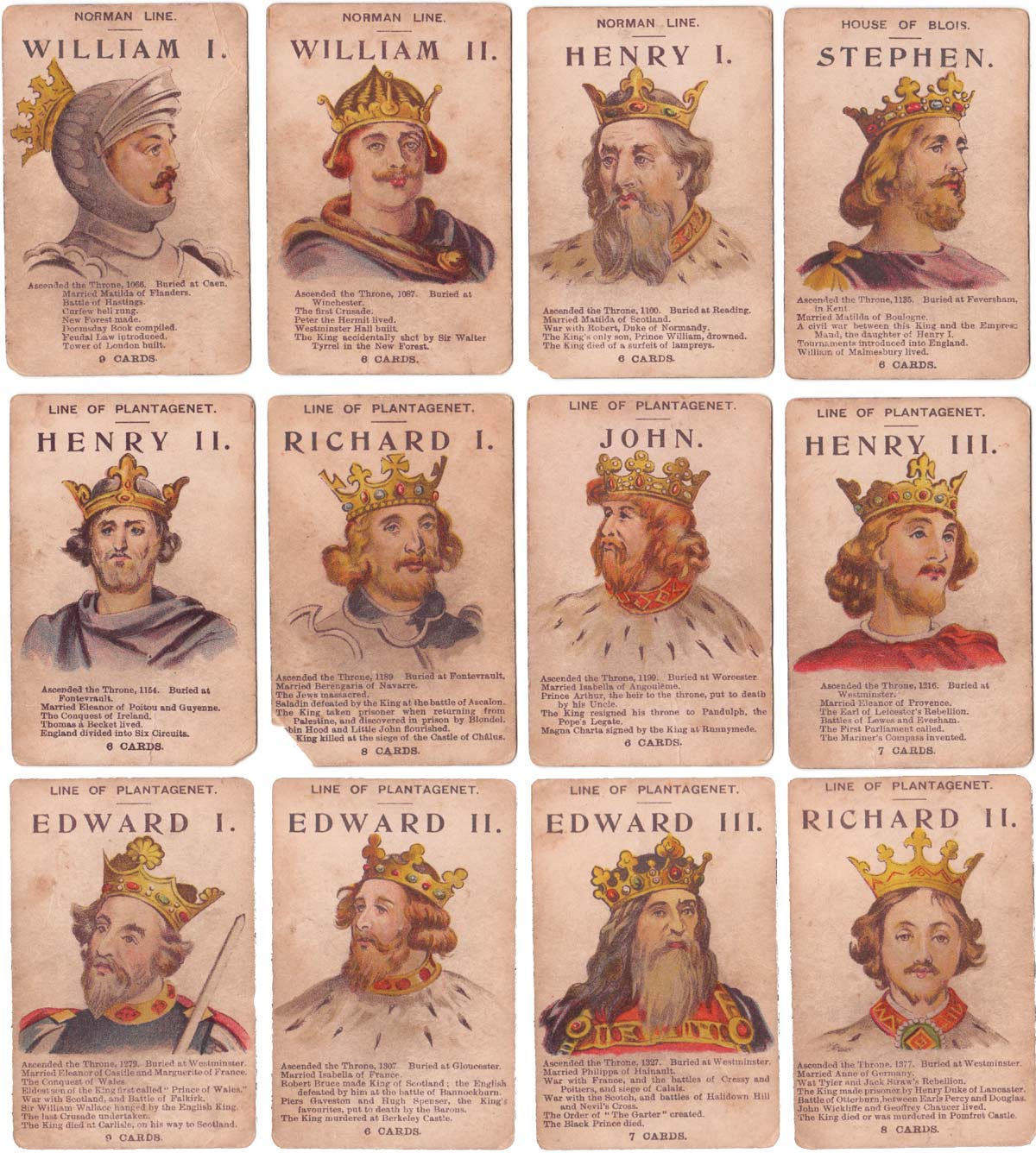
Above: cards from series 1, 2nd edition, c.1875. 84 cards, including Portrait or King cards, and Event cards.
Event cards
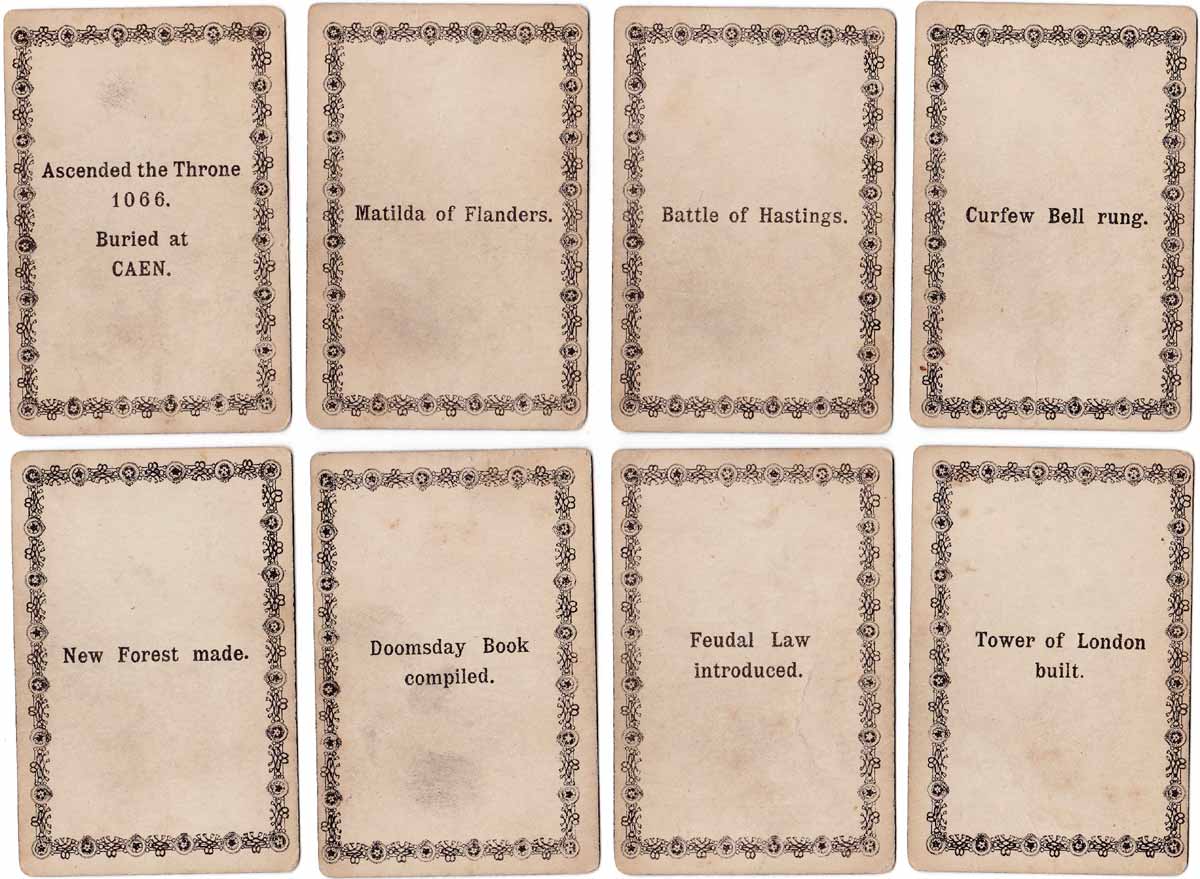
Above: event cards from series 1, 2nd edition, c.1875.
Hide & Seek series 2 (Henry IV - Charles I)
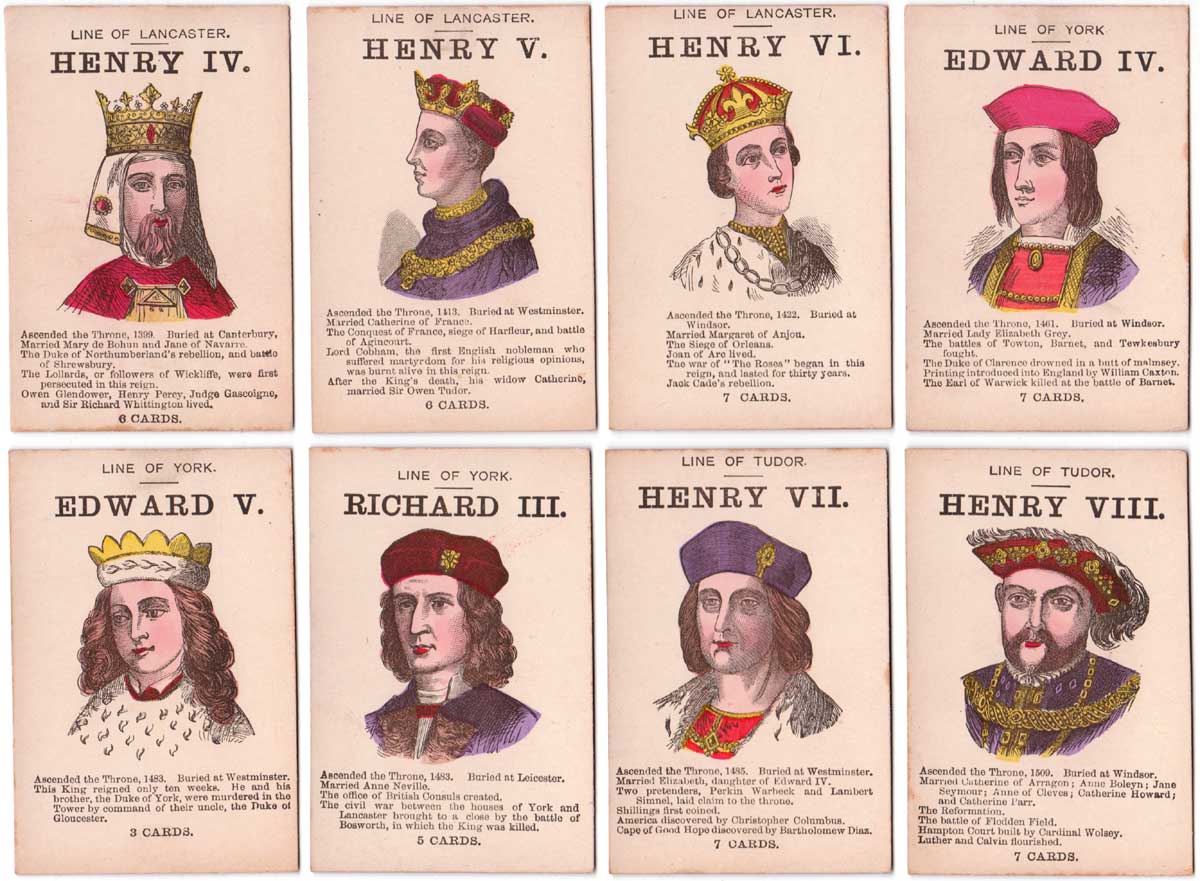
Above: cards from series 2, 1st edition. Single colour reverse. 84 cards, including Portrait or King cards, and Event cards.
Hide & Seek series 3 (Charles II - Edward VII)
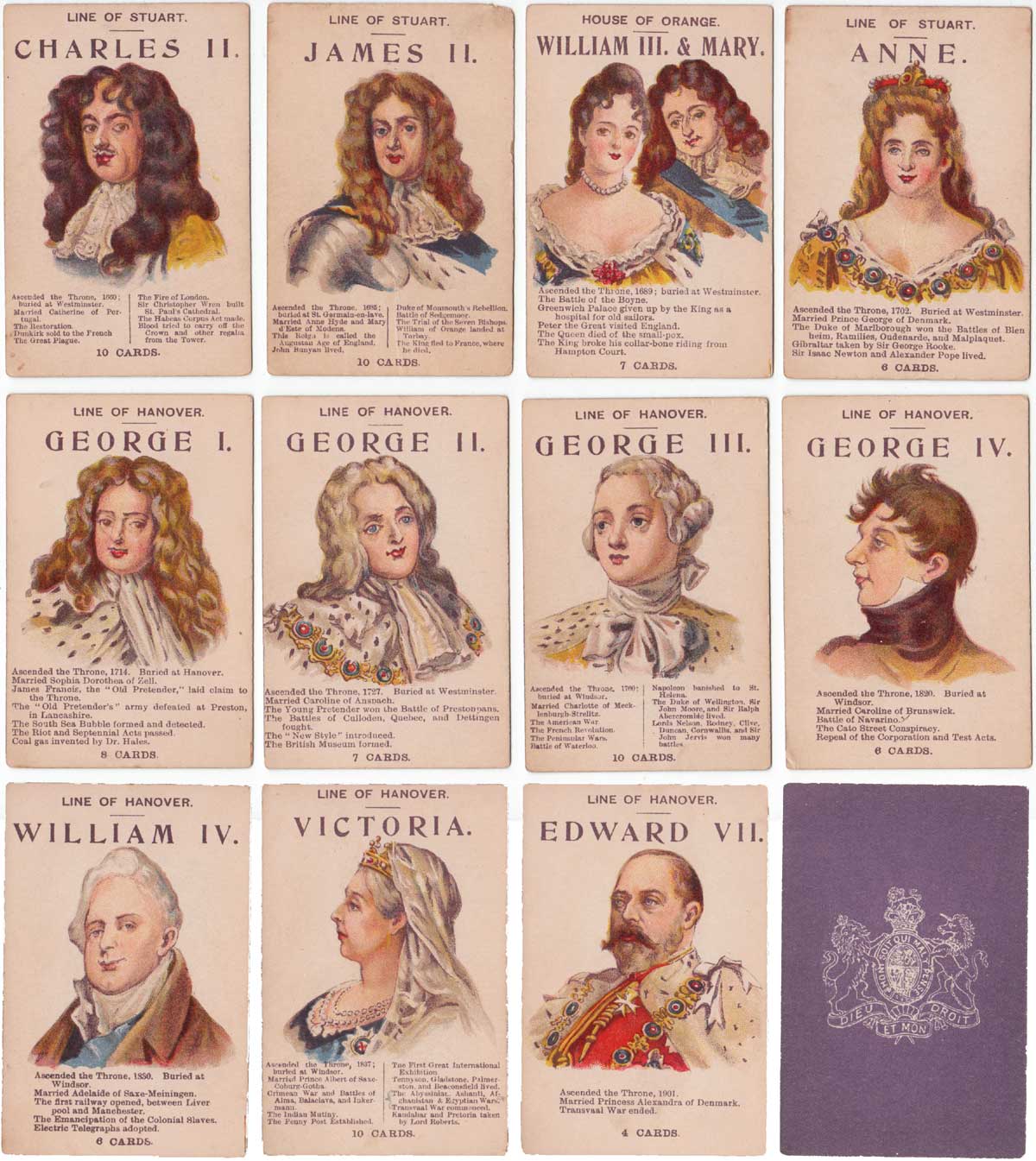
Above: cards from series 3, 2nd edition. 84 cards, published after 1901.
Event cards
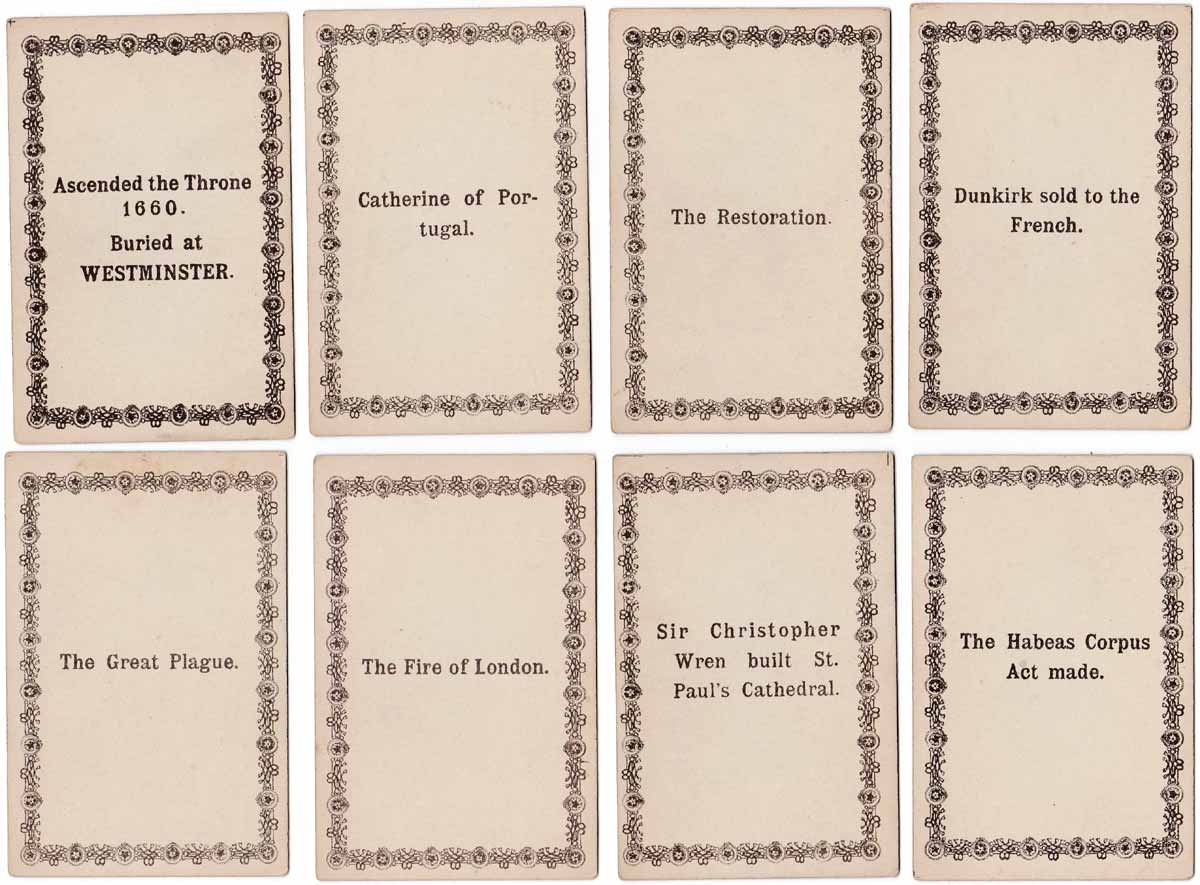
Above: event cards from series 3, 2nd edition.

By Rex Pitts (1940-2021)
Member since January 30, 2009
Rex's main interest was in card games, because, he said, they were cheap and easy to get hold of in his early days of collecting. He is well known for his extensive knowledge of Pepys games and his book is on the bookshelves of many.
His other interest was non-standard playing cards. He also had collections of sheet music, music CDs, models of London buses, London Transport timetables and maps and other objects that intrigued him.
Rex had a chequered career at school. He was expelled twice, on one occasion for smoking! Despite this he trained as a radio engineer and worked for the BBC in the World Service.
Later he moved into sales and worked for a firm that made all kinds of packaging, a job he enjoyed until his retirement. He became an expert on boxes and would always investigate those that held his cards. He could always recognize a box made for Pepys, which were the same as those of Alf Cooke’s Universal Playing Card Company, who printed the card games. This interest changed into an ability to make and mend boxes, which he did with great dexterity. He loved this kind of handicraft work.
His dexterity of hand and eye soon led to his making card games of his own design. He spent hours and hours carefully cutting them out and colouring them by hand.
Related Articles

OXO Faces of the Millennium Dinner
Twentieth-century personalities promoting a millennium dinner at the Oxo Tower in London.

Kids Fun Box playing cards
Colourful cards for children with four non-standard suits connected with the natural world.

Tangle Foot Ale
Badger Brewery Tangle Foot strong ale advertising pack.

Scientific Whist
“Scientific Whist” : standard cards with instructions for play on the faces by Chas Goodall & Son, 1...

Agent Provocateur
Branded lingerie collection in a pack of pin-up playing cards.

Nimbus playing cards
Mike Steer’s weather-themed pack with suits in four colours and backs for cardistry.

Agatha Christie and Playing Cards revisited
Agatha Christie uses card-play as a primary focus of a story, and as a way of creating plots and mot...

The Decadent Deck
Studies in the eroticism of the female body by Inge Clayton.

Historic Shakespeare
“Historic Shakespeare” playing cards featuring Shakespearean characters by Chas Goodall & Son.

Copechat Paramount Sorting System
Preserving the past: a specimen deck showcasing edge-notched cards and their ingenious sorting syste...

Heartsette by Herbert Fitch & Co, 1893
A glimpse into a busy print and design office in late Victorian London.

Rap Rummy
Rap Rummy made by Parker Brothers in 1926, only 4 years after the discovery of King Tutankhamen’s to...

German Travel Cards
A travel-themed educational deck helping American tourists visiting Germany.

Batman® playing cards
Batman playing cards published by InterCol of London 1989.

Can You Believe Your Eyes?
“Can You Believe Your Eyes?” playing cards featuring visual illusions & other oddities.

Pastime Playing Cards for the Blind
The “Pastime” Playing Cards for the Blind manufactured by Goodall & Son Limd., c.1910.
Most Popular
Our top articles from the past 28 days

